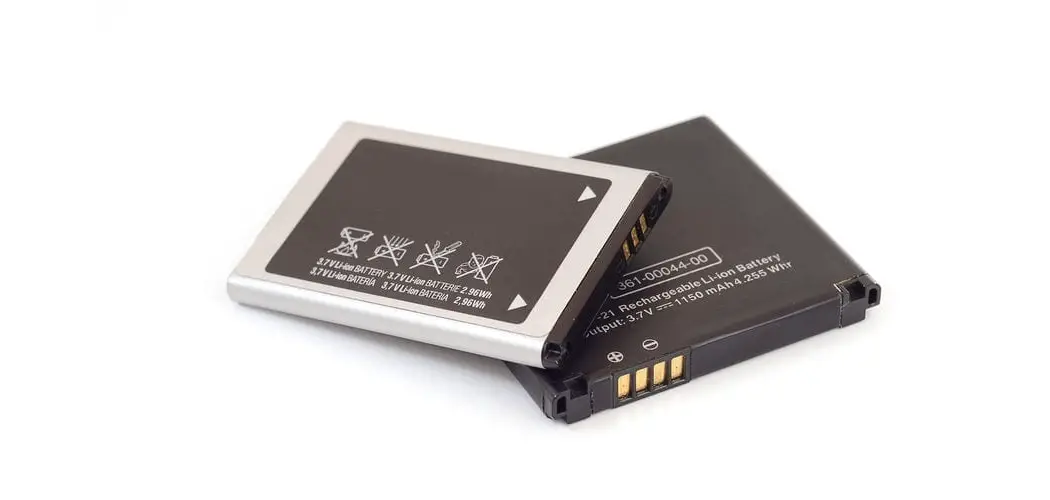Lithium battery fires are a serious safety concern, as they can be difficult to extinguish and may even reignite after being put out. These types of batteries are commonly used in electronic devices such as smartphones, laptops, and portable power banks. If not handled properly, lithium batteries can overheat and catch fire due to a chemical reaction.
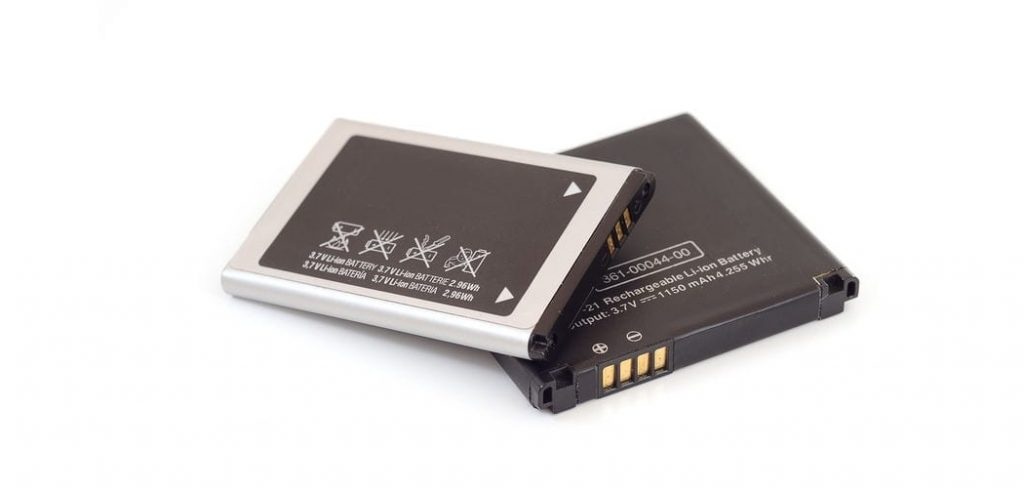
In this guide, we will discuss steps on how to extinguish a lithium battery fire and prevent it from reigniting.
Necessary Items
Before attempting to extinguish a lithium battery fire, it is important to gather the necessary items for safety. These include:
- Fire extinguisher rated for Class D fires (lithium and metal fires)
- Sand or dry powdered graphite
- Non-flammable gloves and protective eyewear
8 Things to Know Before You Start
1) Do Not Use Water or Foam to Put Out the Fire
Water and foam are not effective in extinguishing lithium battery fires. In fact, they can make the situation worse by spreading the fire and causing a potential explosion. As a general rule, never use water to put out any type of battery fire.
2) Do Not Try to Cool Down the Battery With Ice or Ice Packs
Some may believe that cooling down the battery can help in extinguishing the fire. However, this method is not recommended as it can cause thermal shock and potentially reignite the fire. So, stay away from ice or ice packs when dealing with a lithium battery fire.
3) Identify the Type of Battery
It is important to know what type of battery you are dealing with. Lithium batteries usually have a cylindrical shape and are labeled with the letters “Li-ion” or “LiPo.” This information can also be found on the device’s manual or online.
4) Understand the Labeling System
Lithium batteries are labeled with specific numbers and letters that indicate their characteristics. For example, “18650” is a common size for lithium batteries used in electronic devices, while “3.7V” indicates the voltage of the battery. Understanding these labels can help you make informed decisions when dealing with a fire.
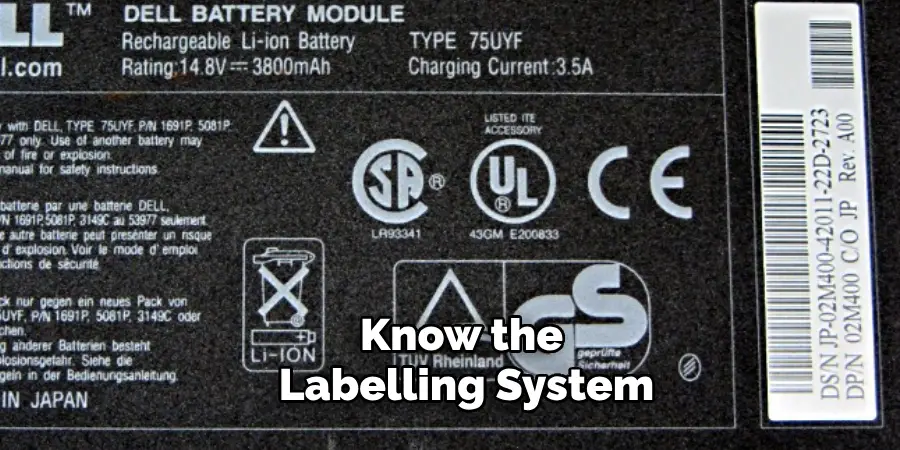
5) Do Not Attempt to Disassemble the Battery
Trying to open or disassemble a burning lithium battery is extremely dangerous. It can release toxic gases and cause an explosion. Leave the handling of the battery to professionals. When in doubt, evacuate the area and call the fire department.
6) Have an Escape Plan
In case the fire becomes uncontrollable or reignites, it is important to have an escape plan. Identify at least two exits from the area and make sure they are clear of any obstacles. Also, inform others in the vicinity about your situation and advise them to evacuate as well.
7) Use Appropriate Fire Extinguishing Techniques
If you have a Class D fire extinguisher, use it as directed to put out the fire. If not, use sand or dry powdered graphite to smother the flames. Avoid using any material that can conduct electricity and create sparks.
8) Monitor the Battery for at Least an Hour
After extinguishing the fire, it is crucial to monitor the battery for at least an hour. This is to ensure that there are no remaining hot spots or potential reignition. Use a thermal camera or infrared thermometer, if available, to detect any heat sources.
Lithium battery fires should never be taken lightly and must be handled with caution. It is important to always have the necessary safety items and follow proper procedures when dealing with a fire. Remember to evacuate if the situation becomes unmanageable, and never attempt to extinguish the fire with water or physical force.
12 Steps on How to Extinguish a Lithium Battery Fire
Step 1: Alert Others
If you notice a lithium battery fire, immediately alert those around you and evacuate the area. It is crucial to get everyone to safety before attempting to extinguish the fire. This will also prevent the fire from spreading to other nearby objects.
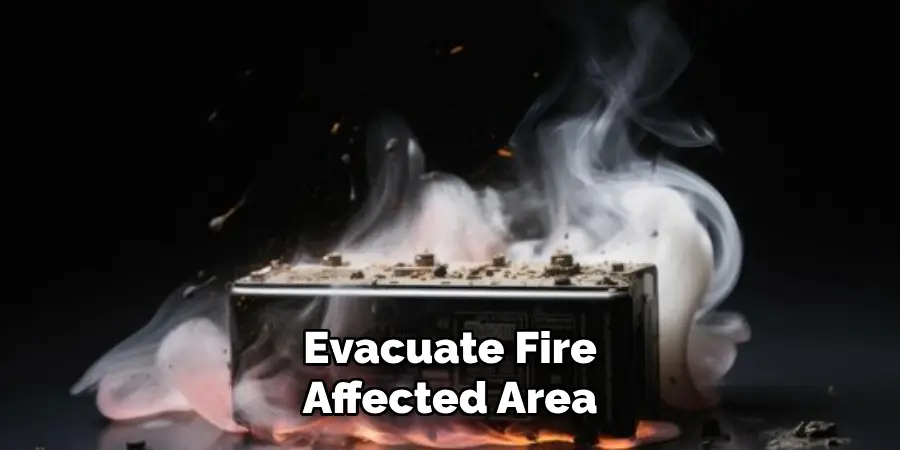
Step 2: Cut Off Power Source
If possible, disconnect the power source to the device or remove the battery. This will help stop the flow of electricity and slow down or stop the chemical reaction in the battery. Also, make sure to turn off any nearby electrical equipment.
Step 3: Assess the Situation
Before attempting to extinguish the fire, assess the situation and determine if it is safe to do so. If there are any signs of a large or spreading fire, do not attempt to put it out and call for professional help immediately.
Step 4: Use Sand or Dry Powdered Graphite
If the fire is small and contained, cover it with sand or dry powdered graphite. These substances can help smother the fire by cutting off its oxygen supply. But be careful not to pour too much at once, as it can cause the fire to spread.
Step 5: Use a Class D Fire Extinguisher
If available, use a fire extinguisher rated for Class D fires. These types of extinguishers are specifically designed for lithium and metal fires and can effectively put out flames. If using a fire extinguisher, always follow the manufacturer’s instructions and aim at the base of the fire.
Step 6: Wear Protective Gear
Before attempting to extinguish the fire, put on non-flammable gloves and protective eyewear. This will help protect your hands and eyes from any potential chemical reactions or flying debris. Even if the fire is small, it is always better to err on the side of caution.
Step 7: Use Water as a Last Resort
Water should only be used as a last resort when trying to extinguish a lithium battery fire. This is because water can react with lithium and cause the fire to become more intense. If there are no other options available, use a spray bottle or damp cloth to lightly apply water onto the fire.
Step 8: Do Not Use Carbon Dioxide Extinguishers
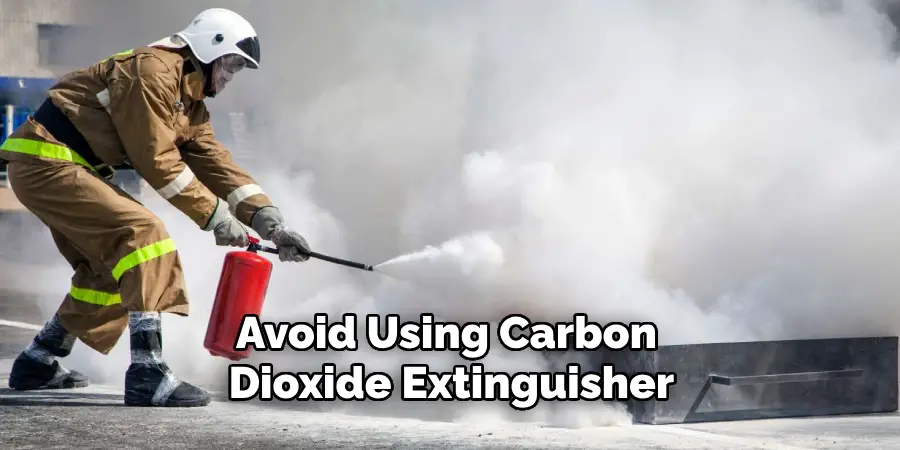
Avoid using carbon dioxide (CO2) extinguishers on lithium battery fires. While CO2 can put out regular fires, it is not effective for lithium and metal fires and may even make them worse. Then, it can also release toxic fumes and potentially harm those nearby.
Step 9: Wait for the Fire to Cool
After successfully extinguishing the fire, do not touch or move the device or battery. Wait for at least 30 minutes for the fire to cool down before handling it. This will help prevent any potential reignition or accidental burns.
Step 10: Properly Dispose of the Battery
Once the fire has been extinguished and the device or battery has cooled down, follow proper disposal measures. Contact your local hazardous waste disposal facility for instructions on how to safely dispose of lithium batteries.
Step 11: Ventilate the Area
After a lithium battery fire, it is important to ventilate the area by opening windows and doors. This will help clear out any lingering fumes and reduce the risk of inhalation. Just be mindful of any potential reignition and make sure the fire is completely out before ventilating.
Step 12: Learn How to Prevent Lithium Battery Fires
The best way to deal with a lithium battery fire is to prevent it from happening in the first place. Always follow proper charging instructions and avoid overcharging or using damaged batteries. Also, lithium batteries should not be exposed to extreme temperatures, and they should always be stored in a cool, dry place.
Lithium battery fires can be unpredictable and dangerous, but with the right knowledge of how to extinguish a lithium battery fire and tools, they can be effectively extinguished. Remember to stay calm, assess the situation, and prioritize safety before attempting to put out a lithium battery fire. It is also important to properly dispose of the battery and take preventive measures to avoid future incidents.
9 Safety Measures to Prevent Lithium Battery Fires
1) Use Original Chargers
Using a charger that is not specifically designed for your device can cause the battery to overcharge or overheat, leading to a potential fire. Always use the original charger that came with your device or purchase one from a reputable source.
2) Avoid Overcharging
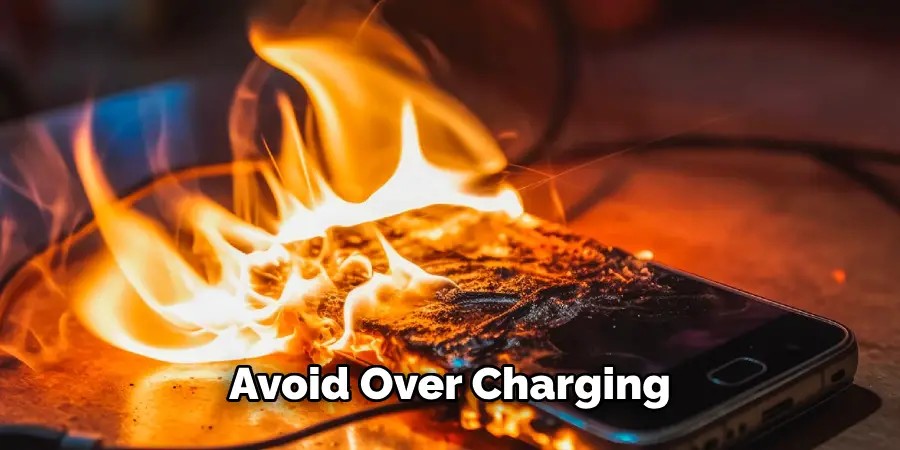
Overcharging lithium batteries can cause them to overheat and potentially catch fire. Once your device is fully charged, unplug it and do not leave it plugged in for extended periods of time. So, avoid leaving your device charging overnight or for long periods when it is not in use.
3) Keep Batteries Away from Heat Sources
Exposing lithium batteries to high temperatures can cause them to overheat and catch fire. Avoid placing them near heat sources such as direct sunlight, stoves, ovens, or heaters. Even storing them in a hot car or leaving them in direct sunlight can be dangerous.
4) Avoid Using Damaged Batteries
Using damaged batteries can increase the risk of a fire. Always check for any signs of damage, such as bulging, leaking, or frayed wires, before using a battery. If you notice any damage, do not use the battery; dispose of it properly.
5) Store Batteries in a Safe Place
When not in use, store lithium batteries in a cool, dry place. Avoid storing them near flammable materials or other electronic devices that can produce heat. Also, make sure they are stored away from children and pets to avoid any potential accidents.
6) Do Not Puncture or Disassemble Batteries
Puncturing or disassembling a lithium battery can cause it to release toxic chemicals and potentially catch fire. If you need to dispose of a battery, follow proper disposal measures instead of attempting to open or damage it.
7) Avoid Mixing Old and New Batteries
Mixing old and new batteries in a device can cause an imbalance in voltage and potentially lead to a fire. Make sure to only use batteries of the same type, brand, and age in a device. And replace all batteries at the same time when needed.
8) Follow Transportation Guidelines
When traveling with lithium batteries, make sure to follow transportation guidelines. Check with your airline or transportation provider for specific rules and regulations on how to pack and carry batteries safely.
9) Be Cautious When Handling Damaged Batteries
If you come across a damaged battery, do not try to handle it yourself. Contact a professional or follow proper disposal measures to ensure the safe handling of the battery. Do not attempt to dispose of it in regular trash bins, as this can also be hazardous. By following these safety measures, you can reduce the risk of lithium battery fires and keep yourself and those around you safe.
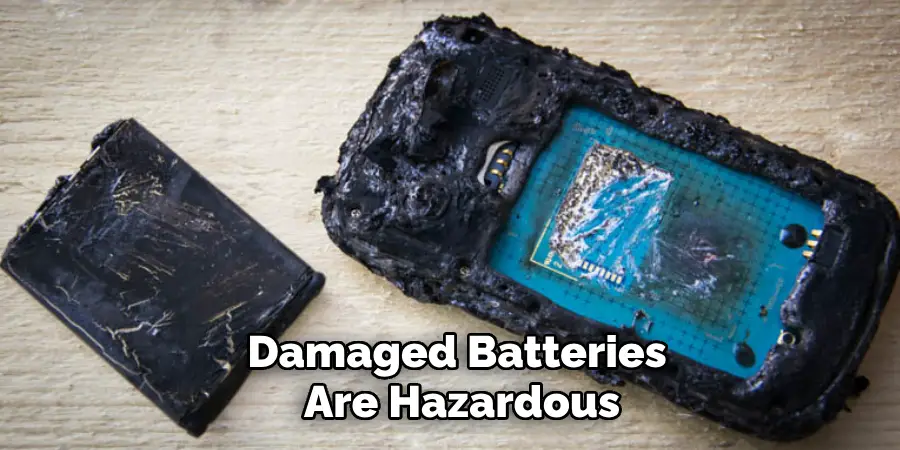
8 Things to Avoid When Dealing with Lithium Battery Fires
1) Do Not Panic
Panicking can lead to poor decision-making and potentially make the situation worse. Stay calm and focused when dealing with a lithium battery fire. Also, make sure to assess the situation before taking any action.
2) Do Not Use Water
Using water to put out a lithium battery fire can cause an explosive reaction. It is also not effective and may spread the fire. Avoid using water at all costs when dealing with lithium battery fires. So, always have a fire extinguisher or other suitable suppressant on hand.
3) Do Not Use Flour
Using flour to put out a lithium battery fire is also not effective and can be dangerous. The fine particles in flour can become airborne and potentially cause an explosion. Avoid using flour as a fire suppressant.
4) Do Not Touch or Move the Battery
Touching or moving a burning battery can increase the risk of burns and potentially cause the fire to spread. Keep a safe distance from the fire and avoid touching or moving the battery until it has cooled down.
5) Do Not Attempt to Open or Cool Down the Battery
Attempting to open or cool down a burning lithium battery can release toxic chemicals and potentially reignite the fire. Only attempt to cool down a battery if it is safe to do so, and always follow proper safety precautions.
6) Do Not Use Metal Objects
Using metal objects, such as tongs or utensils, to handle a burning battery can create a short circuit and increase the risk of an explosion. Always use non-conductive materials when handling a burning lithium battery.
7) Do Not Breathe in the Fumes
The fumes released from a burning lithium battery can be toxic. Avoid breathing in the fumes, and make sure to have proper ventilation when dealing with a fire. If possible, wear a mask or face covering to protect yourself.
8) Do Not Dispose of the Battery in Regular Trash Bins
As mentioned before, lithium batteries should not be disposed of in regular trash bins. They require special disposal measures due to the potential hazards they pose. Always follow proper disposal guidelines for lithium batteries.
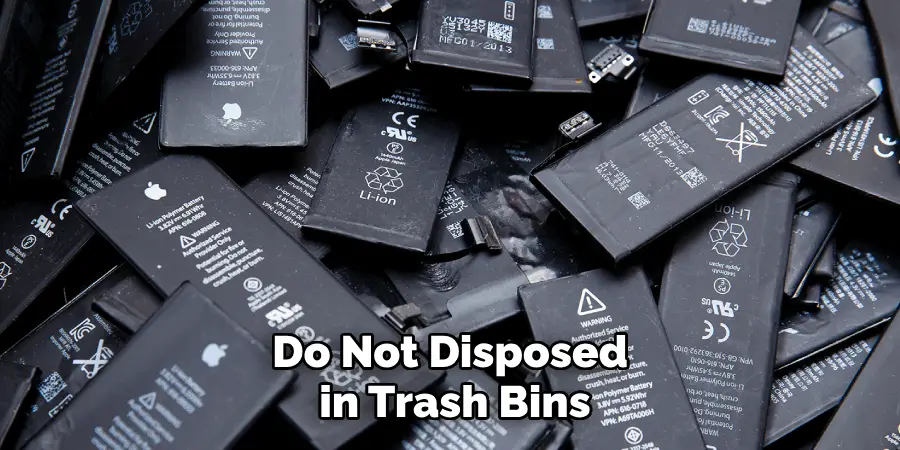
By avoiding these actions when dealing with a lithium battery fire, you can protect yourself and others from harm and effectively manage the situation at hand. Remember to always prioritize safety and follow proper precautions when handling lithium batteries to avoid any potential dangers.
8 Additional Tips for Proper Lithium Battery Handling
1) Read the Manual
Always read the manual that comes with your device to understand how to properly handle and charge the lithium battery. Each device and battery may have specific guidelines and safety precautions that you should follow.
2) Use a Protective Case
Invest in a quality protective case for your device, especially if you are prone to dropping it or if you have kids who may handle the device. A protective case can prevent any damage to the battery and decrease the risk of a fire.
3) Keep Batteries at Room Temperature
Storing and charging batteries at room temperature is ideal for their longevity and safety. Extreme temperatures, both hot and cold, can affect the performance and lifespan of a lithium battery. So, avoid leaving them in direct sunlight or cold environments.
4) Use the Right Charger
Only use the charger that is specifically designed for your device and battery. Using a different charger can cause damage to the battery and potentially lead to a fire. If you need to replace your charger, make sure it is compatible with your device.
5) Avoid Overcharging
Overcharging a lithium battery can lead to overheating and potentially cause a fire. Always unplug your device once it is fully charged, and avoid leaving it plugged in for extended periods of time. When charging overnight, use a timer to avoid overcharging.
6) Check for Damage
Regularly check your device and battery for any signs of damage, such as cracks or leaks. If you notice any damage, stop using the battery immediately and replace it with a new one. And, always handle damaged batteries with caution.
7) Use a Surge Protector
Using a surge protector can protect your devices from power surges and prevent any potential damage to the battery. It is particularly useful when charging multiple devices at once. Then, make sure to use a surge protector that is compatible with your device’s voltage and wattage requirements.
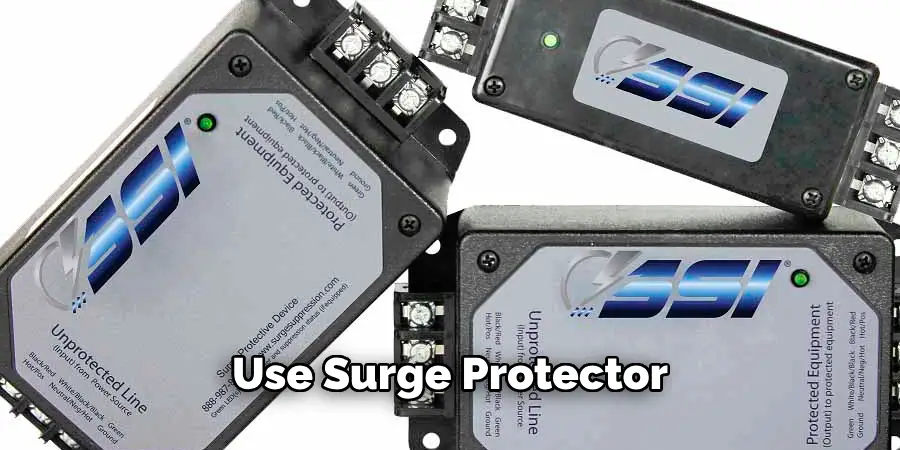
8) Follow Transportation Guidelines
When traveling with lithium batteries, make sure to follow transportation guidelines. Check with your airline or transportation provider for specific rules and regulations on how to pack and carry batteries safely. Properly packaging and handling batteries can prevent any accidents during transit.
By following these additional tips on how to extinguish a lithium battery fire, you can ensure the safe handling and usage of lithium batteries in your everyday life. Remember to always prioritize safety and take necessary precautions to avoid any potential dangers. With proper care and caution, you can effectively use lithium batteries without any mishaps or hazards.
Frequently Asked Questions
Can Lithium Batteries Spontaneously Combust?
Yes, under certain circumstances, such as damage or overheating, lithium batteries can spontaneously combust. It is important to handle and use them with caution.
Can Lithium Batteries Be Recycled?
Yes, lithium batteries can be recycled. Many electronic stores and recycling centers offer battery recycling services. Make sure to properly dispose of your old batteries to prevent any potential hazards.
Are There Any Alternative Battery Options Available?
Alternative battery options are available, such as nickel-metal hydride (NiMH) or nickel-cadmium (NiCd) batteries. However, lithium batteries are currently the most commonly used and recommended for electronic devices due to their high energy density and longer lifespan.
Can I Use a Lithium Battery After It Has Been Exposed to Water?
No, it is not safe to use a lithium battery that has been exposed to water. Water can damage the battery and potentially lead to a fire. Dispose of the battery properly and replace it with a new one.
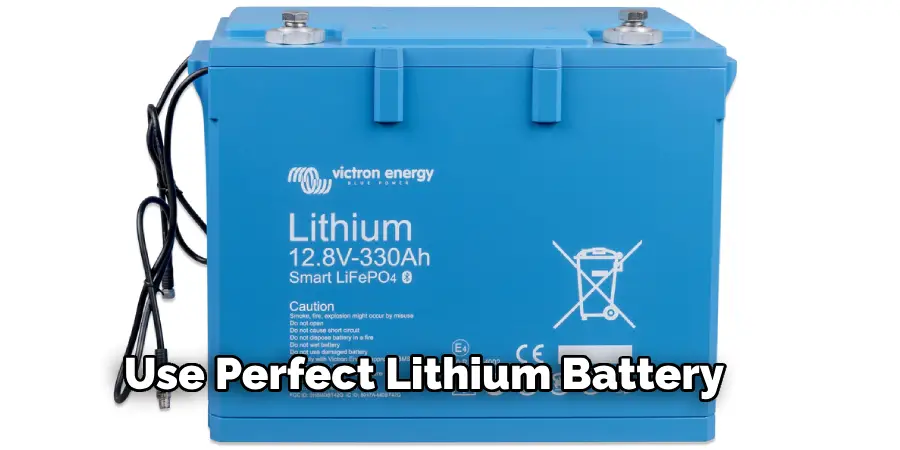
Conclusion
Lithium batteries have become an integral part of our daily lives, powering various electronic devices that we rely on. It is important to understand how to handle and use them safely to avoid any potential hazards. By following proper safety precautions and handling guidelines on how to extinguish a lithium battery fire, we can ensure the longevity and safe usage of lithium batteries. Remember to prioritize safety and take necessary measures when handling these powerful energy sources.
So, always stay informed and educated on proper lithium battery handling techniques for a safer and more efficient experience.

